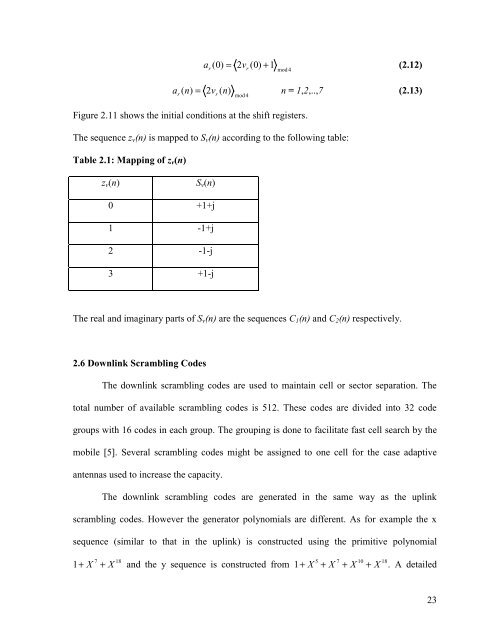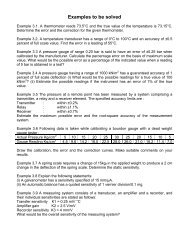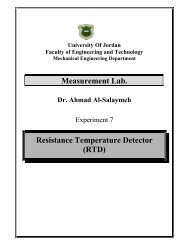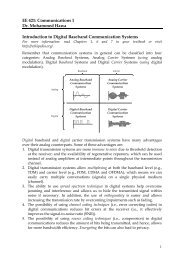Simulation of Third Generation CDMA Systems - Virginia Tech
Simulation of Third Generation CDMA Systems - Virginia Tech
Simulation of Third Generation CDMA Systems - Virginia Tech
Create successful ePaper yourself
Turn your PDF publications into a flip-book with our unique Google optimized e-Paper software.
ar( 0) = 2vr( 0) + 1 (2.12)mod 4ar( n) = 2vr( n) mod 4n = 1,2,..,7 (2.13)Figure 2.11 shows the initial conditions at the shift registers.The sequence z v (n) is mapped to S v (n) according to the following table:Table 2.1: Mapping <strong>of</strong> z v (n)z v (n)S v (n)0 +1+j1 -1+j2 -1-j3 +1-jThe real and imaginary parts <strong>of</strong> S v (n) are the sequences C 1 (n) and C 2 (n) respectively.2.6 Downlink Scrambling CodesThe downlink scrambling codes are used to maintain cell or sector separation. Thetotal number <strong>of</strong> available scrambling codes is 512. These codes are divided into 32 codegroups with 16 codes in each group. The grouping is done to facilitate fast cell search by themobile [5]. Several scrambling codes might be assigned to one cell for the case adaptiveantennas used to increase the capacity.The downlink scrambling codes are generated in the same way as the uplinkscrambling codes. However the generator polynomials are different. As for example the xsequence (similar to that in the uplink) is constructed using the primitive polynomial7 185 7 10 181+ X + X and the y sequence is constructed from 1+ X + X + X + X . A detailed23
















